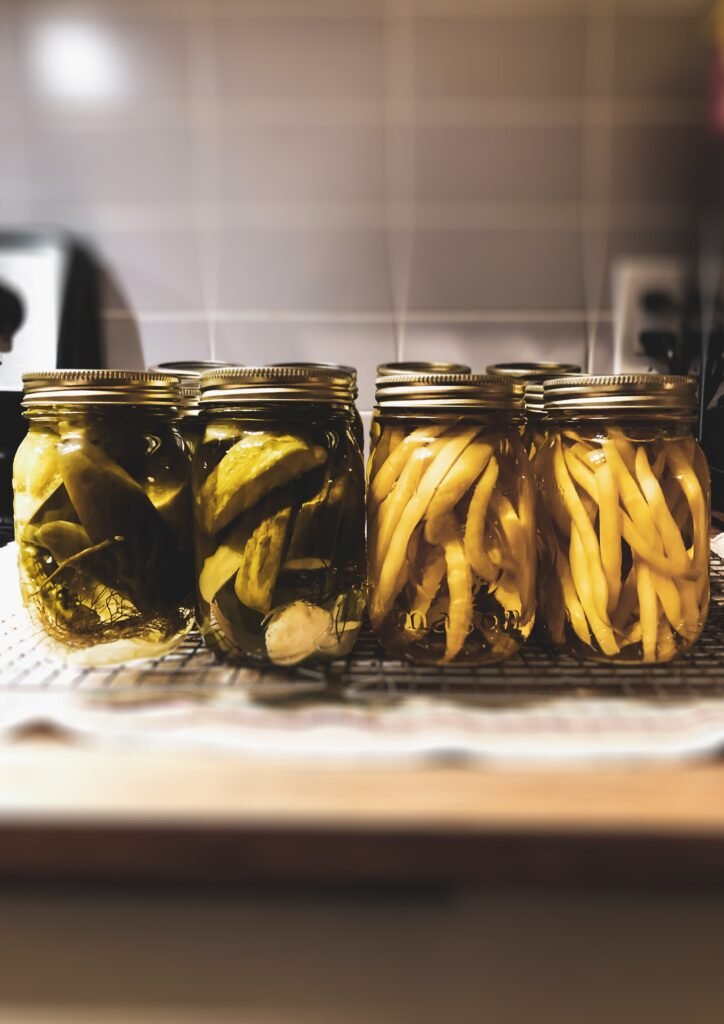Imagine stumbling upon an old wooden crate tucked away in your grandparents’ attic. The intrigue of the hidden treasures it may hold is enough to ignite your curiosity. But before diving into the contents, it is essential to consider the importance of preserving history by restoring these ancient wooden crates. In this article, we will explore the significance of refinishing old wooden crates and how it allows us to not only unlock the secrets of the past but also showcase the true craftsmanship of a bygone era. Get ready to embark on a journey of discovery and preservation as we uncover the beauty behind these forgotten relics.
Choosing the Right Wooden Crates
When it comes to restoring old wooden crates, choosing the right ones for your project is essential. Before diving into the restoration process, take some time to determine the purpose of the crates. Are you planning to use them for storage, decoration, or as a display piece? This will help you understand what kind of crates you should be looking for.
Determining the Purpose of the Crates
The purpose of the crates will dictate the type and style you should choose. If you’re using them for storage, sturdy and functional crates would be ideal. On the other hand, if you’re looking to showcase them as decorative pieces, you might want to consider crates with interesting details and a unique design. Understanding the purpose of the crates will guide you in selecting the ones that best fit your needs.
Considering the Size and Dimensions
Another important factor to consider is the size and dimensions of the crates. Take measurements of the space where you plan to use or display the crates. This will help you ensure that the crates you choose fit perfectly in that area. Keep in mind that oversized crates may overpower a small space, while small crates may get lost in a larger area. By considering the size and dimensions, you’ll be able to choose crates that harmonize with the space.
Assessing the Condition of the Crates
Before deciding to restore a wooden crate, it’s crucial to assess its condition. Look for any signs of damage such as cracks, splinters, or breaks. Evaluate the overall stability and strength of the crate. Some damage can be repaired easily, while severe damage may require more extensive restoration. By thoroughly assessing the condition of the crates, you can make an informed decision about the feasibility of restoration and the effort it will require.
Gathering the Necessary Tools and Materials
Once you’ve selected the wooden crates you’d like to restore, it’s time to gather the necessary tools and materials to embark on your restoration journey.
Basic Tools for Crate Restoration
For basic crate restoration, you’ll need a few essential tools. These include a hammer, screwdriver, pliers, sandpaper, paintbrushes, and a paint scraper. These tools will come in handy during the cleaning, repairing, and refinishing process.
Specialized Materials for Restoring Wooden Crates
In addition to basic tools, you may need some specialized materials for restoring wooden crates. These can include wood fillers, wood glue, nails, screws, and brackets for reinforcing weak sections. Having these materials readily available will make it easier to repair any damaged areas and ensure the structural integrity of the crates.
Safety Equipment for the Restoration Process
Safety should always be a top priority when restoring wooden crates. Make sure you have safety goggles, gloves, and a dust mask to protect yourself from flying debris, harmful chemicals, and fine dust particles. These safety equipment items will help prevent injuries and ensure that you can work on your crate restoration project with confidence.

This image is property of images.unsplash.com.
Preparing the Workspace
Before you start working on the crates, it’s important to prepare your workspace for the restoration process. This will make the entire project more organized and efficient.
Clearing and Cleaning the Area
Begin by clearing the area where you’ll be working. Remove any unnecessary items and create a clean, clutter-free space. This will allow you to move around easily and prevent any accidents or damage to your workspace.
Organizing Tools and Materials
Next, organize your tools and materials. Having everything easily accessible will save you time and frustration during the restoration process. Consider using storage bins or labeled containers to keep everything in order, making it easier to find what you need when you need it.
Ensuring Proper Ventilation and Lighting
Proper ventilation is crucial when working with chemicals, such as paint or varnish. Open windows or use fans to ensure fresh air circulates in your workspace. Additionally, good lighting is essential for seeing the details of the crates and ensuring precision during the restoration process. Position adequate lighting sources to illuminate your workspace effectively.
Removing Dirt and Debris
Before you can begin the actual restoration process, it’s important to remove any dirt, dust, and debris from the wooden crates. Cleaning them thoroughly will ensure that the restoration process can be done effectively and that the final result is as polished as possible.
Brushing and Vacuuming the Crates
Start by gently brushing off any loose dirt or debris from the surface and crevices of the crates. A soft-bristle brush will help remove the dirt without causing any damage. Once you’ve removed the loose dirt, use a vacuum cleaner with a soft brush attachment to remove any remaining dust or debris.
Using Mild Soap and Water for Cleaning
If the crates are still dirty after brushing and vacuuming, you can use a mild soap and water solution for further cleaning. Dip a sponge or a soft cloth into the soapy water and gently scrub the surface of the crates. Rinse the sponge or cloth frequently to avoid spreading dirt. Once you’ve finished cleaning, wipe the crates with a clean, damp cloth to remove any residue from the soap.
Removing Stubborn Stains and Adhesive Residue
For stubborn stains or adhesive residue, you may need to use specialized cleaning products. Stains can often be removed using a mixture of vinegar and water, while adhesive residue can be dissolved with rubbing alcohol or a commercial adhesive remover. Test these products on a small, inconspicuous area of the crate first to ensure they don’t cause any damage or discoloration. Always follow the instructions provided by the cleaning product manufacturer.

This image is property of images.unsplash.com.
Repairing Damaged Areas
After cleaning the crates, it’s time to address any damaged areas that may need repair. Cracked wood, splinters, or broken sections can be fixed with a few simple steps.
Identifying Cracks, Splinters, and Breaks
Carefully inspect the crates to identify any cracks, splinters, or breaks. Use a magnifying glass if necessary to closely examine the wood. Take note of the areas that need attention so you can prioritize the repairs.
Applying Wood Filler and Sanding
For minor cracks and splinters, wood filler can be used to repair the damage. Apply the wood filler directly onto the damaged area, following the manufacturer’s instructions. Once the filler has dried, use sandpaper to smooth out the surface, ensuring it matches the surrounding wood. Sanding will create a seamless finish and prepare the surface for the next steps of restoration.
Replacing or Reinforcing Weak Sections
If a section of the crate is severely damaged or beyond repair, it may be necessary to replace it entirely. Carefully remove the damaged section and replace it with a piece of wood that matches the original as closely as possible. Alternatively, you can reinforce weak sections with additional wooden braces, brackets, or straps. This will help strengthen the crate and prevent further damage in the future.
Sanding the Wooden Crates
Sanding is a crucial step in restoring wooden crates as it helps achieve a smooth and even surface. It also prepares the wood for applying a protective finish.
Choosing the Right Sandpaper Grit
Selecting the correct sandpaper grit is important to achieve the desired level of smoothness. For initial sanding or removing rough surfaces, a coarse grit sandpaper (around 80 to 120) is recommended. As you progress, you can switch to a finer grit (around 180 to 220) for a smoother finish. Experiment with different grits to find the one that works best for your specific type of wood and the level of restoration needed.
Using Electric or Manual Sanders
For larger areas or when dealing with multiple crates, using an electric sander can save you time and effort. Random orbital sanders or palm sanders are ideal for smooth, even sanding. However, when working on smaller, more intricate details or for spot sanding, a manual sanding block or sandpaper wrapped around a wooden dowel can provide better control.
Achieving a Smooth Surface
When sanding, apply even pressure and move the sander or sandpaper in the direction of the wood grain. Be careful not to sand too aggressively, as this can damage the wood or create uneven surfaces. The goal is to achieve a smooth, consistent surface while preserving the unique texture and character of the wood.

This image is property of images.unsplash.com.
Applying a Protective Finish
To enhance the beauty of your restored wooden crates and protect them from damage, applying a protective finish is essential.
Deciding on the Suitable Finish
The choice of finish depends on both the desired aesthetic and functional requirements. If you want to preserve the natural beauty of the wood, consider using a clear varnish or polyurethane. For a more rustic look, you can use stains or paints to add color and character to the crates. Make sure you choose a finish that is suitable for the intended use of the crates and the type of wood you are working with.
Applying Stains or Paints
When applying stains or paints, start with a small, inconspicuous area or an extra piece of wood to test the color and to ensure the desired effect. Use a brush or a cloth to apply the stain or paint evenly, following the manufacturer’s instructions. Apply multiple coats if necessary, allowing each coat to dry completely before applying the next. This will help achieve an even and vibrant color that highlights the unique grain of the wood.
Sealing with Varnish or Polyurethane
After the stain or paint has dried, protect the surface with a clear varnish or polyurethane. Apply the chosen protective finish using even brush strokes, following the wood grain. Allow each coat to dry completely before applying subsequent coats. The number of coats will depend on the level of protection you desire. Ensure that the finish is fully cured before using or displaying the crates.
Reassembling and Reinforcing Crates
Once the wooden crates have been restored and given a protective finish, it’s time to reassemble and reinforce them to ensure their stability.
Repairing Loose or Missing Hardware
Inspect the crates for any loose or missing hardware such as hinges, handles, or latches. Tighten loose hardware with a screwdriver or replace missing hardware with suitable replacements. This will not only restore the functionality of the crates but also add to their overall aesthetic appeal.
Gluing and Nailing Loose Boards
If there are any loose boards on the crates, apply wood glue to the joints and press them together firmly. Use clamps to hold the boards in place until the glue dries. Additionally, you can reinforce the joints by driving small nails or brads carefully into the joints for added strength.
Using Reinforcing Brackets or Straps
For crates that require additional structural support, consider using reinforcing brackets or straps. These can be attached to weak areas of the crates to strengthen their overall stability. Reinforcing brackets or straps should be carefully selected to complement the style and design of the crates while providing the necessary support.
Adding Authentic Touches
To truly capture the essence of the wooden crates’ history and add a touch of authenticity, consider implementing some additional details.
Matching Historical Colors and Patterns
If you’re restoring vintage or antique crates, research the historical colors and patterns associated with their time period. Use this information to match the colors and recreate any traditional stencils or designs. This attention to detail will help bring back the original charm and character of the crates.
Adding Vintage Labels or Logos
For an extra authentic touch, consider adding vintage labels or logos to the crates. You can design and print these labels yourself or search for replica labels that suit the era or style of the crates. Affix the labels carefully, making sure they are securely attached and aligned with the crate’s surface.
Using Authentic Hardware
Incorporating authentic hardware, such as vintage hinges, handles, or locks, will add to the overall authenticity and charm of the wooden crates. Scour antique stores, flea markets, or online marketplaces for original or replica hardware that matches the style and era of the crates. Be sure to install the hardware securely in accordance with the manufacturer’s instructions.
Conclusion
Restoring old wooden crates can be a rewarding and enjoyable process that allows you to preserve history while adding a touch of character to your space. By choosing the right crates, gathering the necessary tools and materials, preparing the workspace, and following the step-by-step restoration process, you can bring new life to these vintage treasures. Whether repurposing them for storage, using them as decorative elements, or showcasing their historical significance, your restored wooden crates will undoubtedly become cherished pieces in your home or workspace. Embrace the journey of restoration and let your creative spirit shine as you embark on this delightful endeavor.
